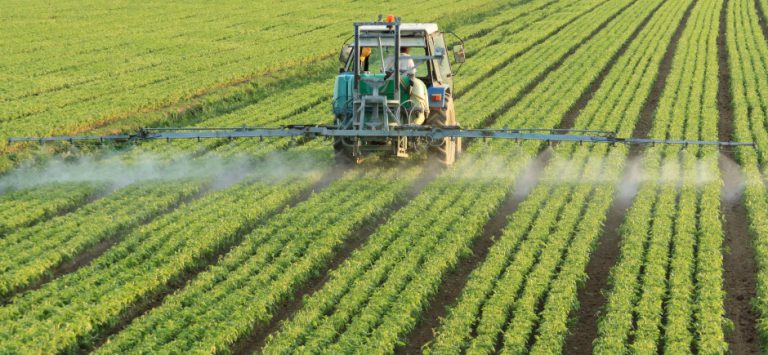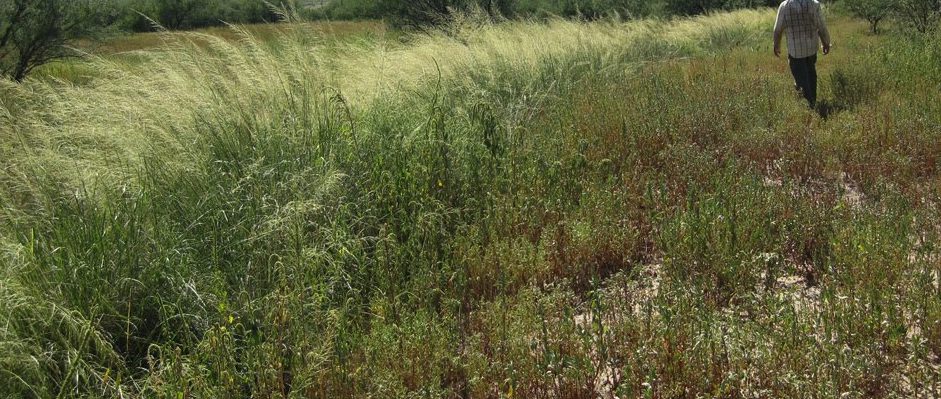Behind the Monsanto Deal, Doubts About the GMO Revolution
When the agrochemical companies acquired the seed companies, something prohibited by antitrust law, their promise was that if the rules were relaxed, drought-resistant cereals and insect-resistant fruit would result from the capital and research strength of the acquiring agrochemical giants. This was bait and switch: GMO research has turned out to be mostly a driver for agrochemical poison sales.
Glyphosate (Roundup) was invented as an industrial de-scalent which removed rust and minerals from steam vessels. It was later discovered to be toxic to plants. Eventually, Monsanto acquired the patents and developed it as a broad-based herbicide, and, patented it as an antibiotic.
Today most crops grown from GMO seeds require the application of Roundup at least twice while being grown, and often a third time as a desiccant to cause defoliation which makes seed harvesting more “efficient”. Most of our food, and other crops like cotton, are now being grown with the integrated use of Roundup and other deadly poisons. The latest addition is 2, 4-D, a primary component of Agent Orange which was responsible for 2 million birth defects in Vietnam. 60,000 Americans Vets get disability payments and 70,000 more have claims pending from exposure to this chemical, the use of which EPA-FDA has approved without testing.
There is abundant, mounting evidence on the residual effects of glysophate in food, soil and water, including that Roundup causes cancer. Both the World Health Organization (WHO) and the state of California say it does. It is dishonest to maintain that GMOs are wholesome while disregarding the poisoning of croplands and consumers by the chemicals required to grow GMO crops.
As when the tobacco companies and the media that ran their ads insisted smoking was safe long after they knew better, Wall Street Journal says that GMO food is harmless, averting its eyes from the health hazards of chemicals associated with GMOs.
These poisons are doing great damage to wildlife and habitat. And, as these articles discuss, the GMOs are also unprofitable. This is a roundabout reflection of the obvious: A food production system based on the systematic destruction of biodiversity in plants, animals and soil life, which thereby destroys soil fertility, is neither physiologically nor economically sustainable.

NOTE: This post initially appeared on WSJ.com on September 14, 2016
Farmers are reconsidering the use of biotech seeds as it becomes harder to justify their high prices amid the measly returns of the current farm economy
Behind a wave of multibillion-dollar mergers in the agriculture business is a moment of change in American farming. The dominance of genetically modified crops is under threat.
Since their introduction to U.S. farms 20 years ago, genetically engineered seeds have become like mobile phones—multifunctional and ubiquitous. Scientists inserted genes to make crops repel insects, survive amid powerful herbicides, survive on less water and yield oils with less saturated fat, in turn eliminating farmers’ amateur chemistry. The U.S. Department of Agriculture estimates this year that 94% of soybean acres were planted with biotech varieties, and 92% of corn acres.
Today, farmers are finding it harder to justify the high and often rising prices for modified, or GMO, seed, given the measly returns of the current farm economy. Spending on crop seeds has nearly quadrupled since 1996, when Monsanto Co. became the first of the companies to launch biotech varieties. Yet major crop prices have skidded lower for three years, and this year, many farmers stand to lose money.
Biotech farming has also shown limitations, given how certain weeds are evolving to resist sprays, forcing farmers to fork out for a broader array of chemicals. Some are starting to seek out old-fashioned seed, citing diminished returns from biotech bells and whistles.
“The price we are paying for biotech seed now, we’re not able to capture the returns,” said Ohio farmer Joe Logan. This spring, Mr. Logan loaded up his planter with soybean seeds costing $85 a bag, nearly five times what he paid two decades ago. Next spring, he says, he plans to sow many of his corn and soybean fields with non-biotech seeds to save money.
Those pressures have touched off a frenzy of deal making among the world’s top seed and pesticide suppliers. Bayer AG on Wednesday said it agreed to buy Monsanto for $57 billion, creating one of the world’s largest agrochemical firms. DuPont Co. and Dow Chemical Co. are pursuing a merger that would eventually spin off a combined agricultural business, along with two other units. Syngenta AG agreed in February to a $43 billion sale to China National Chemical Corp., after turning down a takeover proposal from Monsanto.
Agrochemical groups are aiming to slash costs and build scale in response to the decline in crop prices, which has forced makers of seeds, crop chemicals, fertilizers and tractors to cut prices and lay off staff.
“The crop boom is over,” analysts at Sanford C. Bernstein & Co. declared in a research note last year as combines rolled across the Farm Belt, collecting another bumper harvest after back-to-back record corn harvests in the previous two years.
Following a string of bin-busting harvests, prices for the two main U.S. agricultural crops have plummeted. U.S. farmers this year will collectively earn $9.2 billion less than they did in 2015, and 42% less than they did in 2013, according to the USDA.
The USDA projects corn, soybean and wheat prices holding near their current low levels over the next decade, and Bernstein projected that seed companies will have a hard time raising prices more than inflation over the next three to five years.

The premise of biotech seeds was simple: Plants engineered to grow even while farmers applied a single, all-purpose herbicide to the field to attack weeds would let farmers buy fewer chemicals. Crops also secreting their own bug-killing toxins would reduce reliance on insecticides. Corn, soybean and cotton were natural markets, spanning tens of millions of acres in the U.S.
Monsanto and other seed companies could charge a premium for biotech seeds that were “Roundup Ready”—engineered to withstand Monsanto’s popular brand of herbicide—for those crops, splitting savings with farmers who would in theory save money spent on chemicals and labor.
Eventually, the company settled on a rough formula that would become an industry standard: For every dollar that biotech seeds saved farmers in pesticides and labor, Monsanto would keep about 33 cents, in the form of a “technology fee” charged on top of each bag of seed.
Monsanto then rolled out soybean seeds engineered to survive glyphosate, the versatile herbicide in Roundup, and cotton seeds capable of repelling destructive worms.
Jim Kline, president of Kline Family Farms, which raises corn, soybeans and wheat near Hartford City, Ind., had mixed feelings. “To me, it took the art away from what we were doing,” he said. He watched as neighbors who had long struggled to keep soybean fields clean from weeds planted lab-developed crops and soon boasted pristine emerald fields.

Genetically engineered seeds initially allowed Mr. Kline’s family to hire employees who didn’t know how to spot emerging weeds, helping Kline Family Farms expand to farm four times the acres it worked in the mid-1990s.
The strategy paid off for Monsanto, which in 2000 began a process to spin off from its parent, Pharmacia Corp., to form a separate, agriculture-focused entity. Monsanto earned profits from selling its own seeds and also licensing out crop genes to other seed companies, such as DuPont and Syngenta. Since many biotech crops were engineered to resist glyphosate, which Monsanto introduced in the 1970s, the St. Louis company also cultivated more customers of its top herbicide.
At the turn of the century, more than half of all U.S. soybean acres grew biotech varieties, and one-quarter for corn. It was also an increasingly expensive proposition. By 2006, the average cost of soybean seeds had more than doubled from a decade earlier, while corn seed price gained 63%, according to USDA data.
Over the same period, warning signs emerged in the fields. Scientists confirmed that certain weeds, like goosegrass and rigid ryegrass, had evolved to resist glyphosate, poking up through sprouting crops when the herbicide a year earlier would have shriveled them.
More-problematic invaders such as waterhemp and palmer amaranth grew to withstand glyphosate and began choking out crops. These “super weeds” required farmers to fill their sprayers’ tanks with older, tougher herbicides like dicamba and 2,4-D—and in some cases attack weeds with hoes.
Crop yields, in many cases, stopped keeping up with the rising cost of seeds. The average soybean farmer over the past 10 years saw the amount of soybeans grown per acre climb just 4% to 48 bushels, according to USDA data, trailing the increase in seed prices. Corn yields climbed 21%.
Jim Zimmerman, a farmer who grows corn, soybeans and wheat near Rosendale, Wis., said biotechnology’s boom changed agriculture for the better despite some of the problems.
He said relying on Roundup-resistant corn and soybeans allowed him to save tens of thousands of dollars on tractor fuel and labor that would be required to kill weeds if he had to till his fields and do more spraying, and helped protect his soil from erosion. The cost savings over the years helped Mr. Zimmerman put his children through college, he says. He plans to plant biotech seeds next spring.
Crop Development
Monsanto pioneered genetically modified crop seeds. Some of its milestones with corn:
1997: Monsanto introduces corn that can repel the corn borer, a voracious farm pest.
1998:Monsanto adds a gene enabling the plant to resist both corn borers and a top herbicide.
2010: Monsanto launches a corn engineered to grow on less water, developed with BASF.
Robert Fraley, Monsanto’s chief technology officer who helped develop the company’s earliest incarnations of genetically engineered crops in the 1980s, said farmers will remain faithful to biotech crops.
“Even in tough economic conditions like we’ve seen the last couple of years from a pricing side, farmers still buy the high-tech seeds because it’s saving them money on insecticides and other inputs,” he said.
Kyle Stackhouse, who grows about 1,600 acres of corn and soybeans near Plymouth, Ind., is questioning the high-price seeds’ value.
After turning his soybean fields and nearly three-quarters of his corn fields to biotech varieties, Mr. Stackhouse decided about 10 years ago that biotech seeds weren’t delivering harvests big enough to justify their price. “The [genetic] traits weren’t putting dollars in our pocket,” he said.
Mr. Stackhouse estimates he typically spends about $53 per acre on soybean seeds and $40 on pesticides, versus $83 he would have spent on biotech soybean seeds an additional and $24 on related crop chemicals. That puts him ahead about $14 per acre on costs. Mr. Stackhouse says he has planted no biotech crops for three years.

Since 2013, the world has produced millions of tons more corn, soybeans and wheat than it has consumed, according to the USDA. From their 2012 peak at around $8 a bushel, corn prices fell to half that in mid-2014 and have largely traded between $3.50 and $4.00 a bushel since then, skidding to $3.01½ in late August. Soybean prices have dropped 46% from their 2012 peak.
Monsanto said it expects to ask higher prices for its newest and best-performing seeds, and will likely lower prices for older versions. Overall, Monsanto’s prices will rise “just a tiny bit,” Mr. Fraley, Monsanto’s technology officer, said.
At Beck’s Hybrids, a privately owned seed company based in Atlanta, Ind., research director Kevin Cavanaugh says farmers are getting savvier about gene-shopping.
Farmers planning purchases for next spring are sidestepping seeds engineered to repel the corn rootworm, which hasn’t been much of a problem in portions of the Eastern Corn Belt where Beck’s sells seeds, Mr. Cavanaugh said.
While biotech varieties remain about 86% of Beck’s corn seed sales, the percent of non-engineered seeds sold by Beck’s has climbed about 17% from 2014. “Farmers are saying, I don’t see enough value, or enough [pest] pressure, to justify these technologies,” he said.
Adel, Iowa-based Stine Seed Co. has boosted its production of non-biotech corn seed in response to farmers’ tightening budgets, according to Myron Stine, the company’s president. “We see a trend where growers are going to go away from traits, because traits are expensive,” he said.
Mr. Kline, the Indiana-based farmer, in mid-September was repairing a combine as he prepared to harvest this year’s corn crop, each plant containing genes protecting against Roundup and root-chewing worms. But he has already placed orders to reserve seed for next year, when he anticipates that only about two-thirds of his cornfields will be sown with genetically engineered seeds.
“Commodity prices go down every day,” Mr. Kline said. Since biotech farming isn’t working as well as it once did, he said, “why spend the money?”



